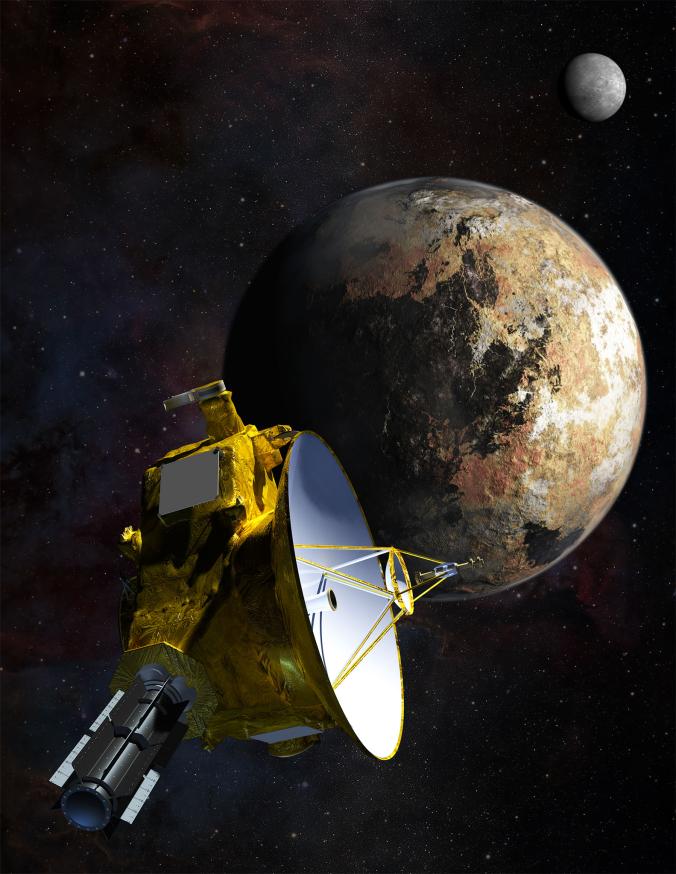Launched in 2006, New Horizons is the fastest spacecraft to ever leave Earth. It crossed the orbit of Jupiter the next year and has been traveling nearly a million miles a day—but it still took 9.5 years for the spacecraft to reach Pluto and its moons.
With less than 24 hours to go until New Horizons tears past Pluto, all systems are go for what’s shaping up to be a near-perfect flyby.
Pluto is officially the largest (known) object in the Kuiper belt, the zone of icy debris that floats beyond the orbit of Neptune. The dwarf planet is 2,370 kilometers across, give or take 20 kilometers.
Even though far better data will be collected over the next 24 hours, mission scientists are having fun speculating about everything they’re seeing so far.
In fact, New Horizons is going so fast—more than 30,000 miles per hour—that the spacecraft will pass by Pluto in just three minutes.
The entire close encounter lasts for hours, though, with New Horizons making hundreds of observations of Pluto and its five bizarre moons. The first of the highest-resolution images will be released Wednesday afternoon, and the rest of the data will trickle in over the next 16 months.
 On Saturday, New Horizons got one of its last looks at this side of Pluto, which faces its moon Charon. Captured from a distance of 2.5 million miles from Pluto, the photo shows mysterious geometric features above the equator, along with sinewy dark splotches.
On Saturday, New Horizons got one of its last looks at this side of Pluto, which faces its moon Charon. Captured from a distance of 2.5 million miles from Pluto, the photo shows mysterious geometric features above the equator, along with sinewy dark splotches.
The New Horizons spacecraft, illustrated here flying past Pluto, traveled about 3 billion miles to visit the dwarf planet and its five known moons.
Pluto and its large moon Charon (left) look distinctly different. This is a composite image from July 11.
And the question arises….just what are we going to learn about pluto?
Well, New Horizons will take a good, detailed look at Pluto and its large moon Charon (in fact, Charon is so large it forms a binary system with Pluto). Scientists are curious about Pluto’s terrains and composition, whether there’s evidence for geologic activity, and what the planet’s thin, nitrogen atmosphere is doing. They’ll also be looking for clues to how the Pluto system formed and evolved—and many of those clues might lie in the features of the four small moons Nix, Hydra, Kerberos, and Styx.
Pluto Family Portrait
After New Horizons passes Pluto, it will continue sailing on into the Kuiper Belt, which is a vast, icy debris ring outside the orbit of Neptune. If NASA approves it, New Horizons will sail past and study another icy world within the next five years. The spacecraft carries enough fuel for that encounter (it’ll use the propellent to adjust its course), and will still be able to send data back to Earth, even though that body is nearly a billion miles farther out. Ultimately, it will continue heading out of the solar system, much as NASA’s Voyager I and II spacecraft are doing.
Check out: National Geographic for more specific info. and answers to questions raised…
http://news.nationalgeographic.com/2015/07/150713-pluto-flyby-ten-questions-answered-space/




